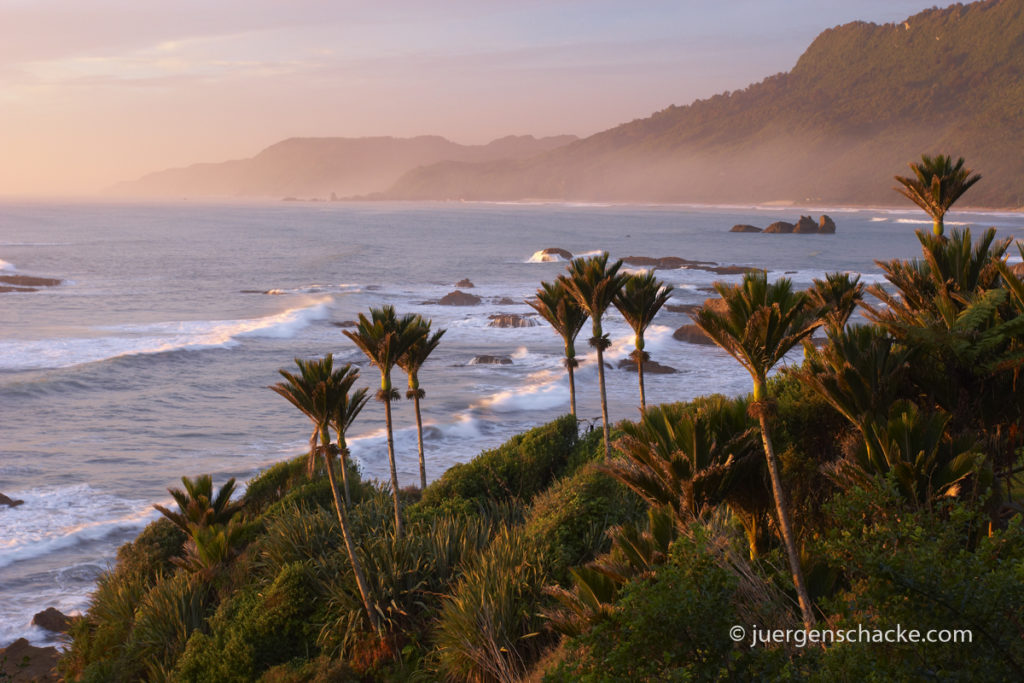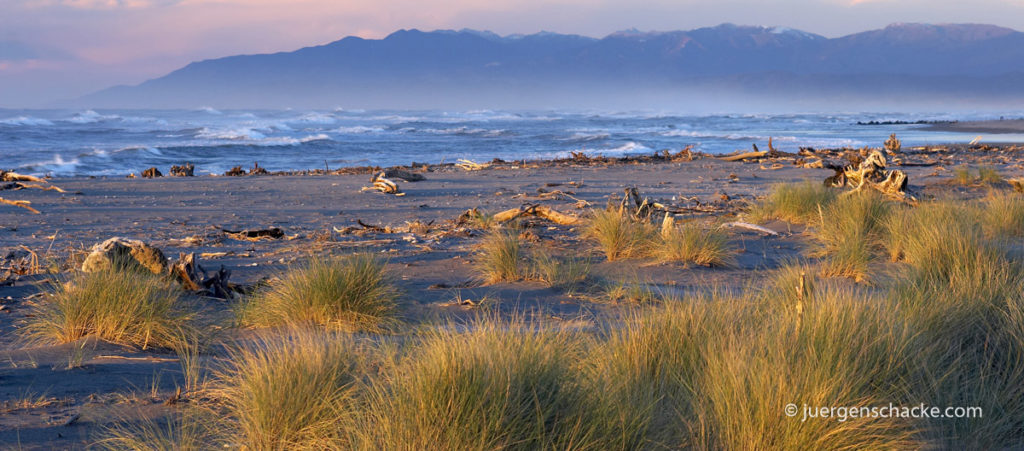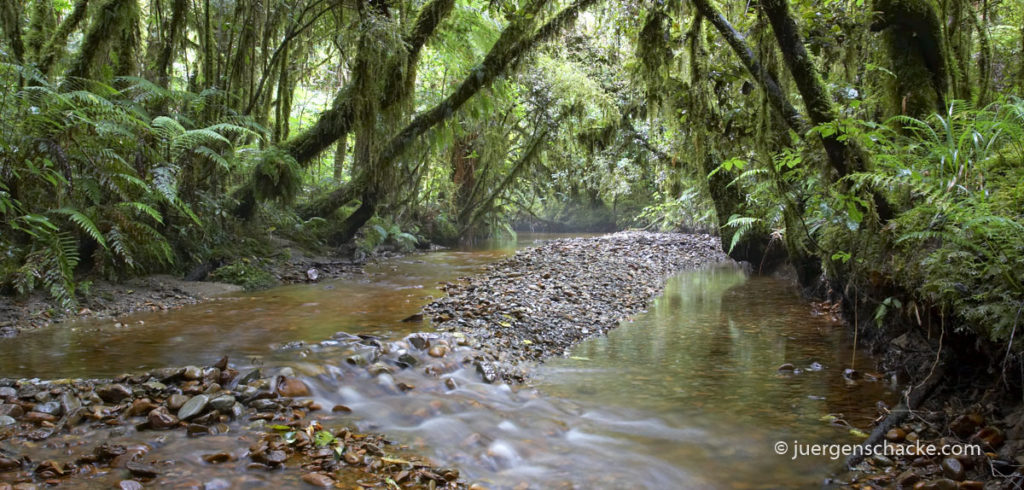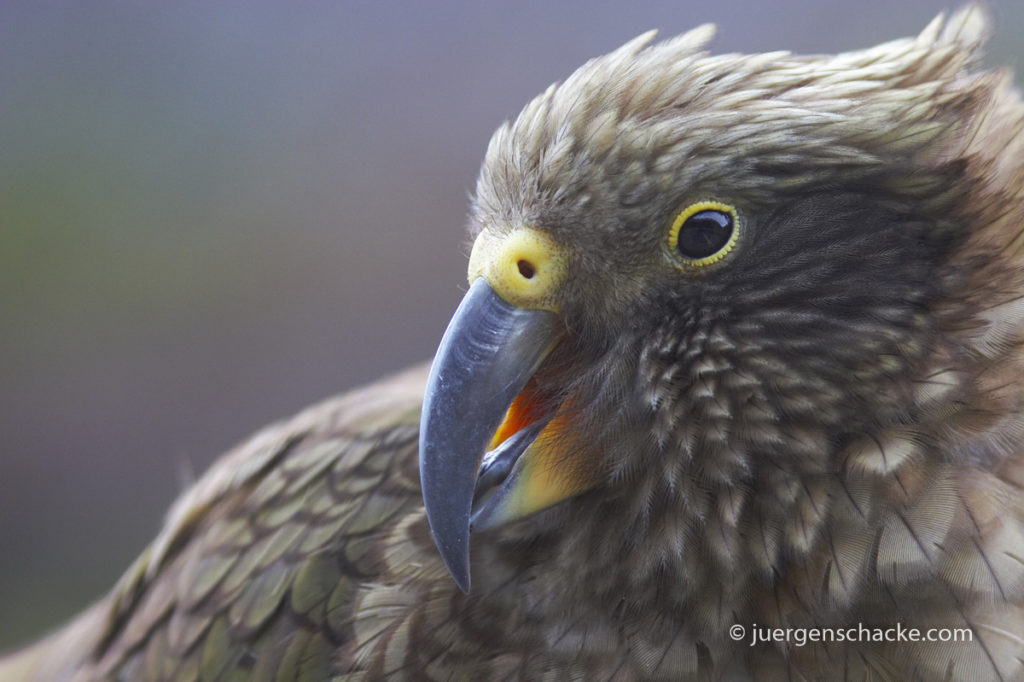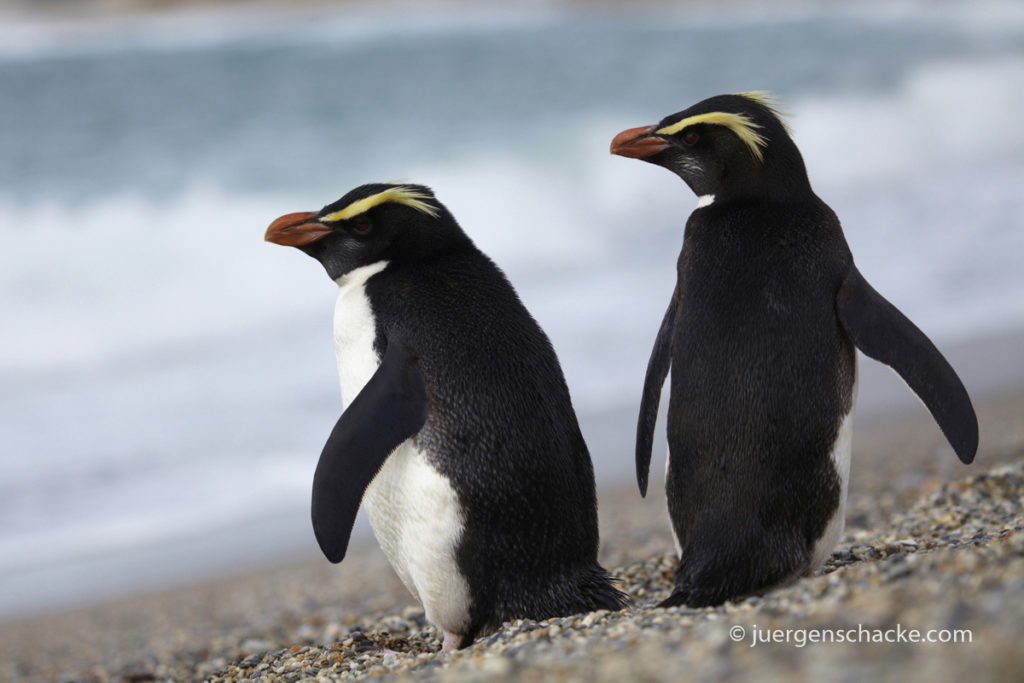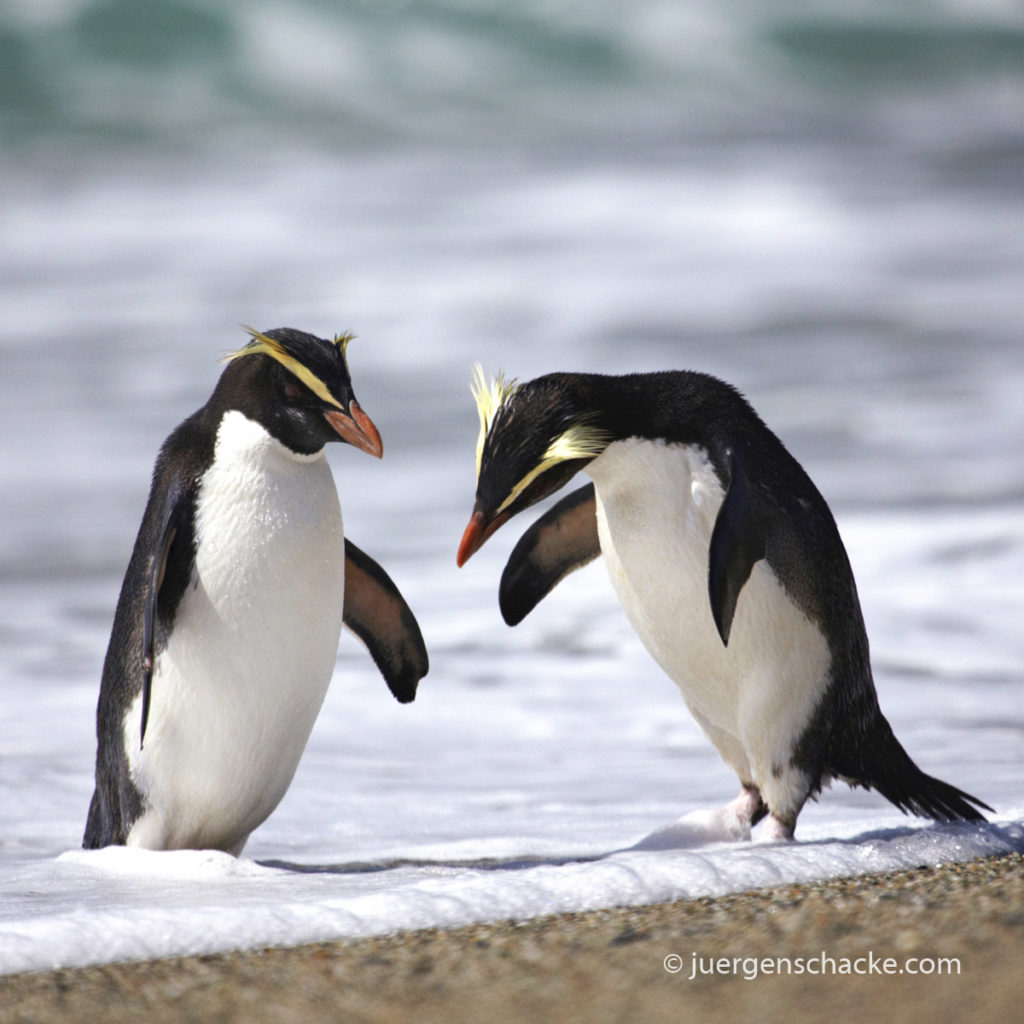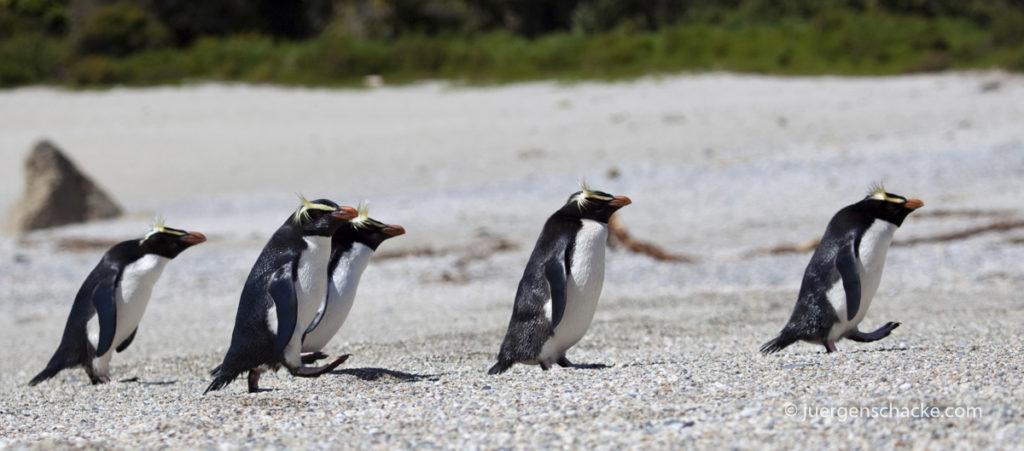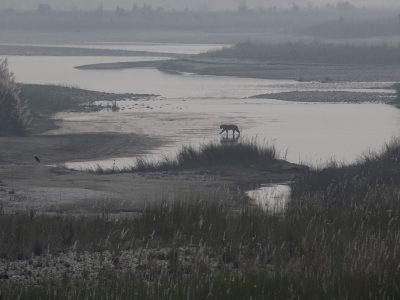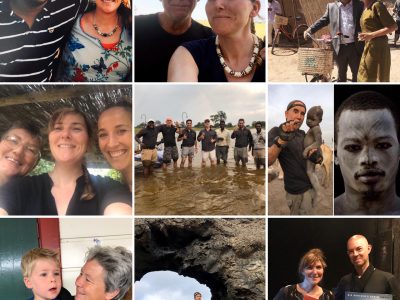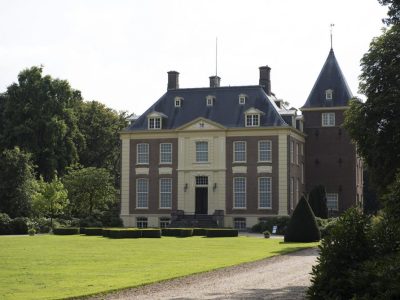The originally German photographer Juergen Schacke (1968) felt so overwhelmed by the beautiful nature of New Zealand that he emigrated there years ago. His photographs and Wilderness Gallery shop are now a household name in the west coast town of Hokitika and far beyond. And that’s why he shares with us five useful tips on how and where to photograph in accessible places on the South Island.
Text: Angelique van Os | Photography: Juergen Schacke
1. The beach
“My favorite place is the beach (of Hokitika), with the mountains in the background. That alone is a beautiful combination. I like to capture the driftwood up close, sometimes it’s an art in itself. With all the coloured layers and shapes. But also the turbulent waves, the foam water and the wind that rages over the land, give movement and liveliness, which is interesting to photograph.”
2. The rainforest
2. The rainforest “I like to go to the rainforest right after a heavy shower. Then there is even more dynamism in the forest. Everything shines. The birds emerge again. Drops drip from the leaves. Wonderful.”
3. Stop on the way
3. Stop on the way “There is so much to see in New Zealand alone on a road trip. Stop once in a while and be surprised. Walk into a forest path for half an hour and you’ll be amazed at what you’ll see. The moss alone is so beautiful.”
4. Arthur’s Pass
“Around the Alps of Arthur’s Pass I always visit the Kea’s. They are very curious birds and therefore fantastic to photograph. Most of them know me by now. I often go to a specific place in the hills and call them: Kea, Kea. That’s the sound they make themselves. Then I wait twenty minutes and often a whole group emerges. Strangely enough the parrots are not on a list of endangered species and they should be, because they are quite tame, they are vulnerable. Unfortunately there are people who take advantage of this and the numbers are drastically decreasing.”
5. Penguins
“I don’t reveal my locations to protect the penguins, but if you’re keen to capture these birds, look for tracks on the beach and around the dunes. You have to be patient, but especially in the evening and at night they emerge.”


